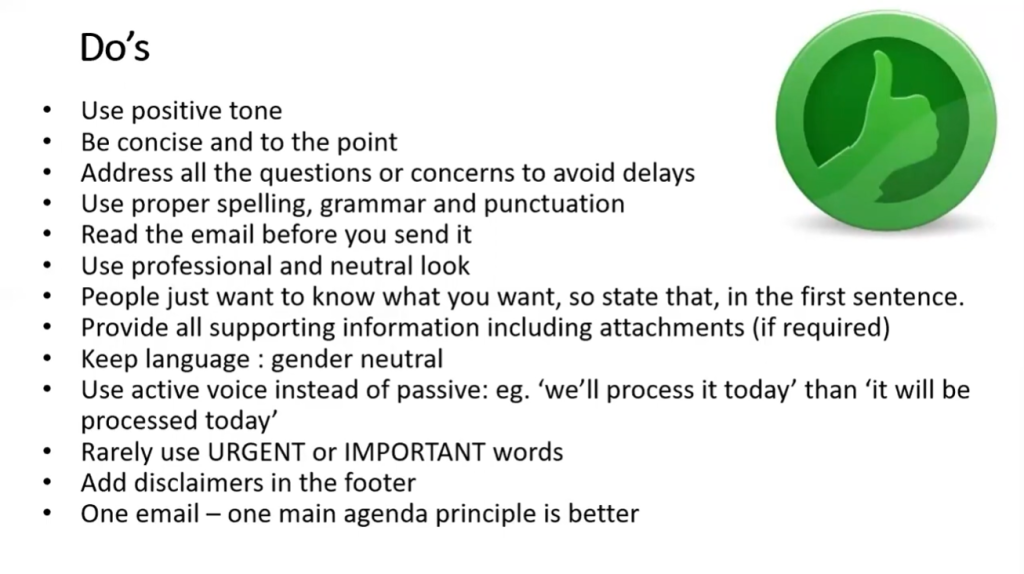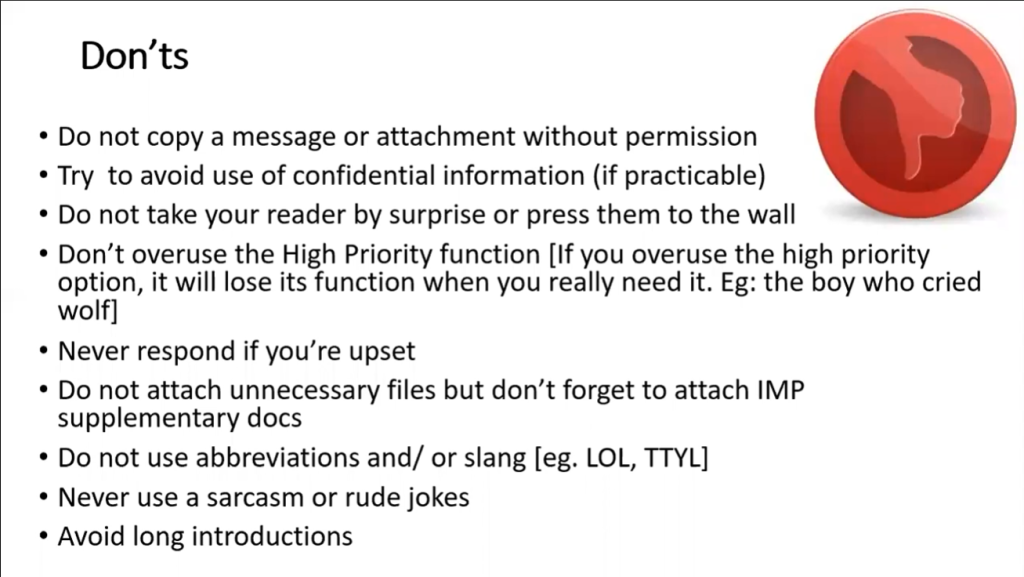In today’s fast-paced professional world, email remains the cornerstone of workplace communication. Whether you’re an entry-level employee, a mid-level manager, or a C-suite executive, the way you craft and send emails can shape perceptions, foster collaboration, or even make or break business opportunities. Mastering email etiquette is not just about following rules—it’s about building trust, clarity, and respect in every interaction. This guide will walk you through the essentials of professional email communication, offering practical tips, real-world examples, and strategies tailored to every career level.
Why Email Etiquette Matters?
Email is more than a tool; it’s a reflection of your professionalism. A well-crafted email can open doors, streamline workflows, and strengthen relationships. Conversely, a poorly written one risks misunderstandings, damages reputations, or even costs business deals.
Consider the difference:
Bad Email Example
Subject: Urgent
Hi, need that file now. Send ASAP.
→ This comes across as abrupt, unclear, and disrespectful.
Good Email Example
Subject: Request for Financial Report – Needed by 3 PM Today
Dear Ramesh,
Could you please share the Q2 financial report by 3 PM today? It’s needed for the board presentation. Thank you for your support.
Best regards,
Anjali
→ This is clear, polite, and actionable, fostering goodwill.Good email etiquette saves time, builds credibility, and ensures your message lands effectively.
The Anatomy of a Professional Email:
A professional email follows a clear structure, ensuring your message is easy to understand and act upon. Here’s the blueprint:
- Subject Line:
Keep it short, specific, and informative. A vague subject like “Meeting” wastes time; instead, try “Meeting Request – Project X Timeline Discussion.” - Greeting:
Tailor it to the recipient. Use “Dear Ms. Sharma” for formal settings or “Hi Ramesh” for familiar colleagues. - Opening Line:
Set the context and tone. For example, “I hope this message finds you well” establishes warmth. - Body:
Be concise, structured, and clear. Use short paragraphs or bullet points for readability. - Closing & Call to Action (CTA):
End with a polite, actionable request, like “Please confirm your availability by Friday.” - Signature:
Include your name, title, company, and contact details for a professional touch
Example
Subject: Meeting Request – Project X Timeline Discussion
Dear Ms. Sharma,
I hope this message finds you well. I would like to request a 30-minute meeting next week to align on Project X’s updated timeline. Are you available on Wednesday or Thursday afternoon?
Looking forward to your confirmation.
Best regards,
[Your Name | Title | Company | Contact Info]
Mastering Tone and Language:
The tone of your email sets the stage for how your message is received. Here’s how to get it right:
Do’s
- Be polite and respectful, regardless of the recipient’s level.
- Use neutral, professional language.
- Adjust tone based on context (e.g., formal for clients, slightly relaxed for colleagues).

Don’ts
- Avoid ALL CAPS—it feels like shouting.
- Skip slang or abbreviations like “u” or “thx” in professional settings.
- Don’t use overly casual greetings in formal contexts (e.g., “Yo” to a client).

Tone Examples
Manager to C-Suite: “Dear Mr. Karki, Kindly approve my request for annual leave on March 12, as discussed earlier.”
Entry-Level to Manager: “Good morning Sir, I am writing to request approval for leave on March 12.”
Handling Common Email Scenarios:
Emails vary by purpose, and each scenario demands a tailored approach. Here’s how to navigate key situations:
- Requesting Information
Dear Ramesh,
Could you please share the updated client list by Friday noon for the marketing review?
Regards,
Sita - Following Up Without Annoying
Dear Anjana,
I wanted to follow up on my earlier email regarding the vendor contract. Please let me know if you require additional details. Thank you for your time.
Regards,
Rahul - Apologizing for Mistakes
Dear Team,
My apologies for sending the incorrect version of the report earlier. Please find the corrected version attached. I regret any confusion caused.
Regards,
Deepak - Responding to Angry Emails
Dear Sandeep,
I understand your concerns. Let’s review the issue together and find a solution. Would tomorrow at 10 AM work?
Regards,
Priya
→ Avoid defensiveness (e.g., “This isn’t my fault”) and focus on solutions.
Email Etiquette Across Career Levels:
Your role in an organization influences how you approach email etiquette. Here’s how to tailor your communication:Entry-Level Professionals
- Respect hierarchy by addressing seniors formally (e.g., “Dear Mr. Gupta”).
- Proofread meticulously to avoid errors.
- Avoid casual language unless invited to use it.
Mid-Level Managers
- Keep emails concise—managers often skim.
- Use bullet points for clarity.
- Use CC/BCC thoughtfully to avoid cluttering inboxes.
C-Suite Executives
- Write short, strategic emails focused on key decisions.
- Use subject lines as executive summaries (e.g., “Approval Needed – Q4 Budget Allocation”).
- Delegate actions clearly.
C-Suite Example
Subject: Approval Needed – Budget Allocation for Q4 Marketing Campaign
Dear Board Members,
Requesting your approval to reallocate $50,000 from IT to Marketing for Q4 campaigns. Key justification: projected 18% ROI uplift. Kindly confirm by Friday.
Regards,
[CEO Name]
The Technical Side of Email Etiquette:
Beyond content, the mechanics of email matter. Avoid common pitfalls with these tips:
- Reply vs. Reply All:
Use “Reply All” only when necessary to avoid flooding inboxes. - CC/BCC:
Use CC for transparency, BCC sparingly to protect privacy. - Attachments:
Name files clearly (e.g., “ProjectX_Timeline_March2025.pdf”). - Professional Email IDs:
Avoid unprofessional addresses like “coolguy123@email.com.” - Formatting:
Use short paragraphs, bullet points, and headings for readability.
Cross-Cultural Email Etiquette:
In a globalized workplace, cultural sensitivity is key. Expectations vary across regions:
- US:
Direct requests work well (e.g., “Please send by EOD”). - Japan:
Use polite, indirect phrasing (e.g., “If possible, would you kindly share the report today?”). - Time-Zone Awareness:
Respect global colleagues by acknowledging their local time when scheduling or setting deadlines.
Avoiding Common Email Mistakes:
Even seasoned professionals slip up. Here’s how to steer clear of frequent errors:
- Sending Too Fast: Always proofread before hitting “Send.”
- Forgetting Attachments: Double-check before sending.
- Overusing “Urgent”: Reserve for true emergencies to maintain credibility.
- Long Paragraphs: Break text into short paragraphs or bullet points for readability.
The Golden Rules of Email Etiquette:
Keep these principles in mind for every email you write:
- Be Clear, Concise, Courteous (3Cs): Get to the point while staying polite.
- Proofread Always: Errors undermine credibility.
- Think Before Sending: Ask, “If this email is forwarded to my CEO, will I be comfortable?”
- Respect Time: Value your recipient’s inbox by being direct.
- Email is Permanent: Treat every message as a professional record.
Your Path to Email Mastery:
Mastering email etiquette is a career-long journey, but it’s one worth taking. A well-crafted email can build bridges, showcase professionalism, and drive results. By following this guide—complete with actionable tips, examples, and exercises—you’re equipped to communicate with confidence at any level. Resources Included in This Kit
- Trainer Slide Deck: 40–50 slides covering all sections for workshops or presentations.
- Participant Workbook: Exercises, rewrite tasks, and scenario-based practice.
- Cheat Sheets & Posters: Quick-reference guides with Golden Rules, Do’s & Don’ts, and sample templates.
Promptly Replying to Emails:
Timely responses are a cornerstone of professional email etiquette, signaling respect and reliability. Aim to reply within 24–48 hours, depending on urgency and context. If immediate action isn’t possible, send an acknowledgment to buy time and set expectations. For example: “Dear Priya, Thank you for your query. I’m reviewing your request and will provide a detailed response by Wednesday.” For institutions, acknowledging receipt of queries or requests is mandatory to ensure transparency and trust.
Scenarios and Best Practices:
- Urgent Requests:
Respond within hours, even if just to confirm receipt (e.g., “I’ve received your urgent request and will follow up by EOD”). - Non-Urgent Queries:
Acknowledge within 24 hours, specifying a timeline (e.g., “I’ll compile the data and get back to you by Friday”). - Group Emails:
Reply only to relevant parties, avoiding unnecessary “Reply All.” - Out-of-Office:
Set an auto-responder with a return date and alternate contact (e.g., “I’m out until August 20. Please contact [Name] for urgent matters”). - Overloaded Inbox:
Prioritize responses based on urgency and sender seniority, but acknowledge all emails to avoid appearing unresponsive.
A prompt reply, even a brief one, keeps communication flowing and demonstrates professionalism.
Document Attestation Protocols:
When institutions attest documents, maintaining their originality is critical to uphold credibility and compliance. Scanned copies must be free of third-party imprints, such as watermarks from apps like CamScanner (e.g., “Scanned by CamScanner”), as these can compromise the document’s authenticity and professionalism.
Scenarios and Best Practices:
- Official Attestations: Use professional scanning equipment or software that doesn’t embed third-party branding. Save files as clean PDFs (e.g., “Certificate_Attestation_2025.pdf”).
- Client Submissions: Ensure documents like contracts or certifications are free of extraneous markings to avoid rejection by legal or regulatory bodies.
- Internal Records: When sharing attested documents internally, verify that scans are high-resolution and untainted by watermarks or annotations.
- Third-Party Tools: If using apps, opt for premium versions that remove watermarks or use institution-approved software to maintain a professional appearance.
- Verification Processes: Before sending, double-check documents for unintended imprints, ensuring they reflect the institution’s standards.
Clean, professional scans reinforce trust and ensure attested documents are taken seriously.
Institutional Branding in Email Signatures:
Your email signature is a digital business card, reinforcing the institution you represent. A well-designed signature incorporates branding elements to promote consistency and professionalism. Include the institution’s logo, official colors, or tagline, alongside your name, title, and contact details.
For example:
Best regards,
Anjali Sharma | Marketing Manager
[Company Logo]XYZ Corporation | “Innovate, Inspire, Impact”
Phone: +123-456-7890 | Email: anjali@xyzcorp.com
Best Practices:
- Consistency: Use a standardized signature template across the organization to ensure uniformity.
- Branding Elements: Incorporate logos or taglines subtly, ensuring they don’t overwhelm the signature or increase email file size.
- Relevance: Include only essential details (e.g., avoid personal social media links unless relevant to the role).
- Hyperlinks: Link the logo or company name to the institution’s website for easy access.
- Mobile Optimization: Ensure the signature displays correctly on mobile devices, avoiding distorted images or formatting issues.
A branded signature not only elevates your email’s professionalism but also reinforces your institution’s identity in every interaction.
Practical Exercises to Hone Your Skills:
Practice makes perfect. Try these exercises to sharpen your email etiquette:
- Rewrite a Bad Email: Turn a vague or rude email into a professional one.
- Draft Emails for Different Scenarios:
- Leave request (entry-level).
- Client introduction (mid-level).
- Budget approval (C-suite).
- Role-Play Escalation: Write emails escalating an issue from employee to manager to CEO.
- Conflict Drill: Respond calmly to a hypothetical angry email.
- Attachment Trap: Draft a follow-up correcting a “forgot attachment” mistake.
Start practicing today, and watch your emails transform from mundane to masterful.

